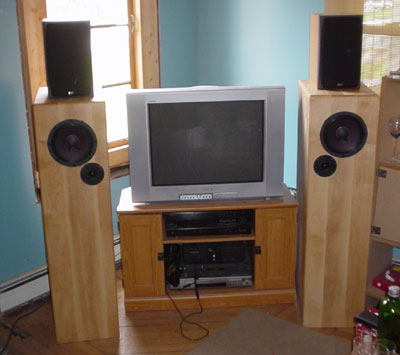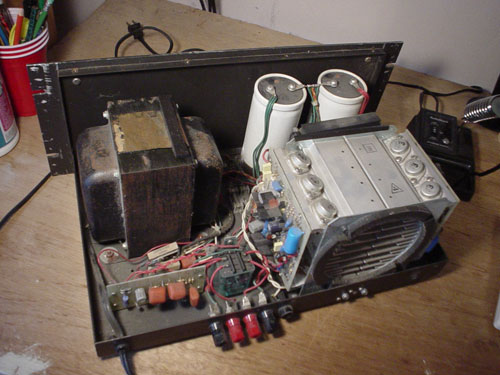
During my senior year at RPI, I started getting really interested in everything audio, especially the way speakers work and how sound is reproduced in the home. I was also fascinated with the idea that people can build speakers that sound better than commercial designs that cost far more than the price of the raw materials.
For my first design I used a Mathcad simulation from Quarter-Wave.com, and made a few wild guesses to throw together a design. I used the Eminence Beta 8 woofer and the Morel MDT20 tweeter. I picked the woofer based on its high efficiency and power handling, and I picked the tweeter based on recommendations on an internet forum. The simulation below shows what the simulated bass response was supposed to be:

If you can read that, it shows that the bass would extend down to just below 40 hz, but below 300 hz the bass is almost 5 db lower than the midrange. Due to the exterior cabinet shape, the bass is even further reduced. This is true in all speakers, but a good designer accounts for that. All I can say is "oops". Fortunately, the woofers are normally used for professional sound so they could stand up to some serious corrective action.
In order to get my bass, I used the Shibatch parametric equalizer. I did eventually get it tuned right so it would play loud and clear at all frequencies above 35 hz.

My friend, Adam built these things for me, and did a damn fine job. He's got a really cool gallery of their construction over here: http://www.adambox.org/gallery/fp_speaker. He did the woodwork, and I did the electronics.
A while back my fraternity bought a big beast of an amplifier to use
at parties. Unfortunately, the thing got abused and someone killed it.
More than once I saved it from getting thrown in the dumpster, and Summer 2003 I finally took it out of the attic and had a serious try at
fixing it.

This thing is a beast. It is 250 watts per channel, bridgeable to 500. It can push more than that through 2 ohms. It will drive 20 amps through a short circuit. This thing can go LOUD with the speakers I built!
I went through and replaced all of the fuses. I had to replace the
output fuse holders. It was a bit of a pain, but I got it all taken
care of. Then there was the hard part:
I have no idea what they did to this poor thing, but a resistor was burnt out. I desoldered it from the board, and was able to use most of the original solder to put in a new one. I forget if there was any sound out of that channel before, but it sounds OK now. Once or twice while I was testing it out I got some quiet distorted sound from that channel. The manual says that this usually indicated a faulty output fuse. I replaced those, and that seemed to fix it. Right now the amp is on permanent loan to my friend Tom and his band. There really wasn't any use for the amp in our El Cerrito apartment.